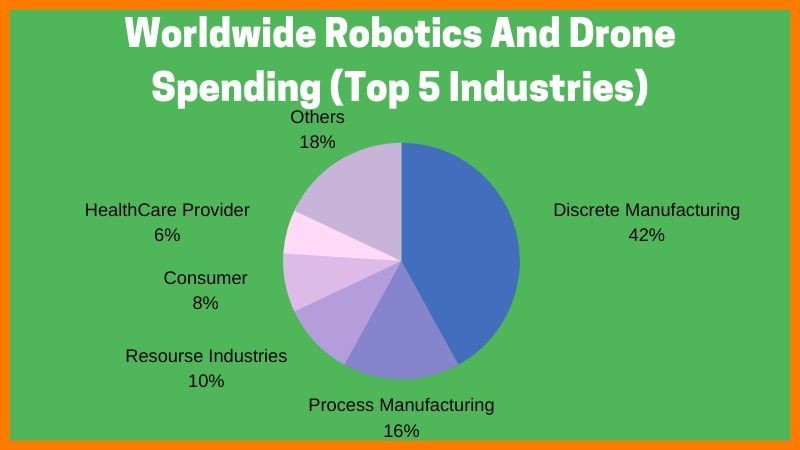The Impact Of Drones And Flying Cars

When conversations are centered around flying cars and drones, it sounds as if one is talking about some parallel universe or science fiction. However, technology has now turned them into reality. Drones and flying cars have the potential to create a cheaper, faster, safer, cleaner, and tightly integrated transportation system.
The commercial applications of drones are reaching new heights every day. Autonomous flight with the help of drones is used in the shooting of movies, wedding videos, and cinematography. Moreover, these flying innovations are being used to transport blood to hospitals in emergency. The wonders of these flying machines are difficult to imagine. So, let's take a look at the the impact of drones and flying cars.
Why Drones And Flying Cars?
Uber’s Flying Cars
China’s EHang
Aurora Flight Sciences
Airbus Vahana
Terrafugia
Drones And Flying Cars of Future In India

Why Drones And Flying Cars?
Urban mobility and its challenges cannot be solved by untested, flashy technology. Global warming and its effects are increasing every year with the rise in urbanization and the advancement in technology.
As the global population is becoming increasingly attracted to urbanization, more and more people are attaining the middle-class tag. They buy a house, then a car, and upgrade their preferred mode of travel to airplanes. All of this collectively strains the transportation system even further.

The number of commercial aircraft passengers will increase by around 50% in the next 20 years, according to the Federal Aviation Administration. The outcome is increased delays, long waiting hours, pollution, and adverse impact on the environment.
The use of bio-fuels are an option, but it will take years to become mainstream. Drones and flying cars are capable of tackling this problem by balancing the needs and mobilization of urbanization. The use of drones and flying cars can and will curb the issue of sky congestion.

Uber’s Flying Cars
Uber announced its plans about the flying cars some time back. And some testing was also done in Melbourne. The company is in talks for procuring a traffic control system for its flying vehicle. Uber is currently improving the design aspect of the airborne vehicle prototype.
The company has planned to test the flights by taking passengers from one of the shopping centers to the airport. It would take around 10 minutes to cover the distance. The normal land route would take around 25 to 30 minutes for the same distance. These vehicles would be available for booking via the Uber app. Uber's efforts can make the vision of flying cars a reality pretty soon provided the testing goes as expected.
China’s EHang
While Uber is still in the process of planning, China’s EHang is already one step ahead. The company has already tested its self-flying passenger drone called 184. It was first showcased in 2016 at the Consumer Electronics Show. The company’s quadrocopter has been tested in Dubai and will become operational soon according to EHang. The company still needs to obtain the required aviation licenses.
Aurora Flight Sciences
Aurora Flight Sciences was acquired by Boeing. At the end of 2017, it unveiled the eVTOL flying vehicle. The company has partnered with Uber, and aims to deliver around 50 aircraft to Uber by 2020.
The uniqueness of these flying cars lies in the fact that they can both be driven and flown, unlike other companies that manufacture the VTOL aircraft. The company has started taking pre-bookings.

Airbus Vahana
Vahana, an undertaking by Airbus, is an electronic autonomous helicopter. The company has also planned to launch an air taxi named City Airbus. Airbus has conducted a few flight tests of the prototype. Vahana can be used for cargo transportation as well. City Airbus looks like a small drone with multiple propellers. Customers will book City Airbus via a mobile app.
Terrafugia
Geely (Volvo's parent company) acquired Terrafugia, Chinese-owned corporation developing a roadable aircraft called "Transition". Terrafugia has started accepting orders and speculations are that the company will make its debut by 2023.
Drones And Flying Cars of the Future In India
During the showcase of Defexpo 2016, Novus Drive was exhibited as the first driverless shuttle in India. The shuttle carried visitors from one dome center to another in New Delhi.
For universities, theme parks, colleges, senior citizen clubs, college campuses, and other such institutions, Novus was slated to be re-invented.

Recently in Ahmedabad, The Dutch roadable aircraft-maker PAL-V’s CEO, Robert Dingemanse, said that India will get its first flying car in 2021. He also said that initial bookings have reached their maximum capacity.






